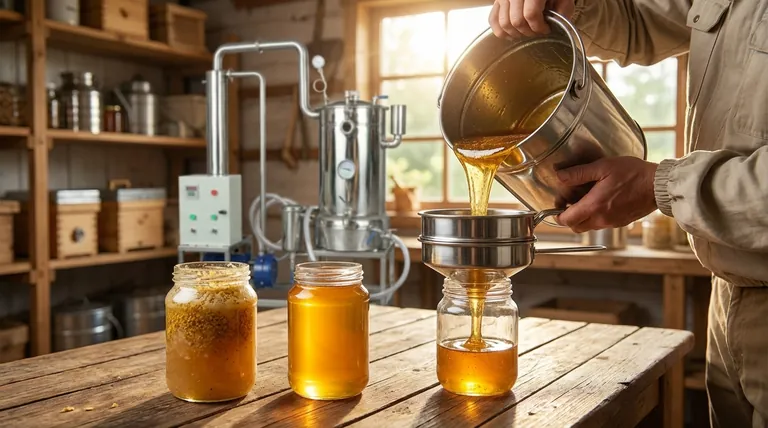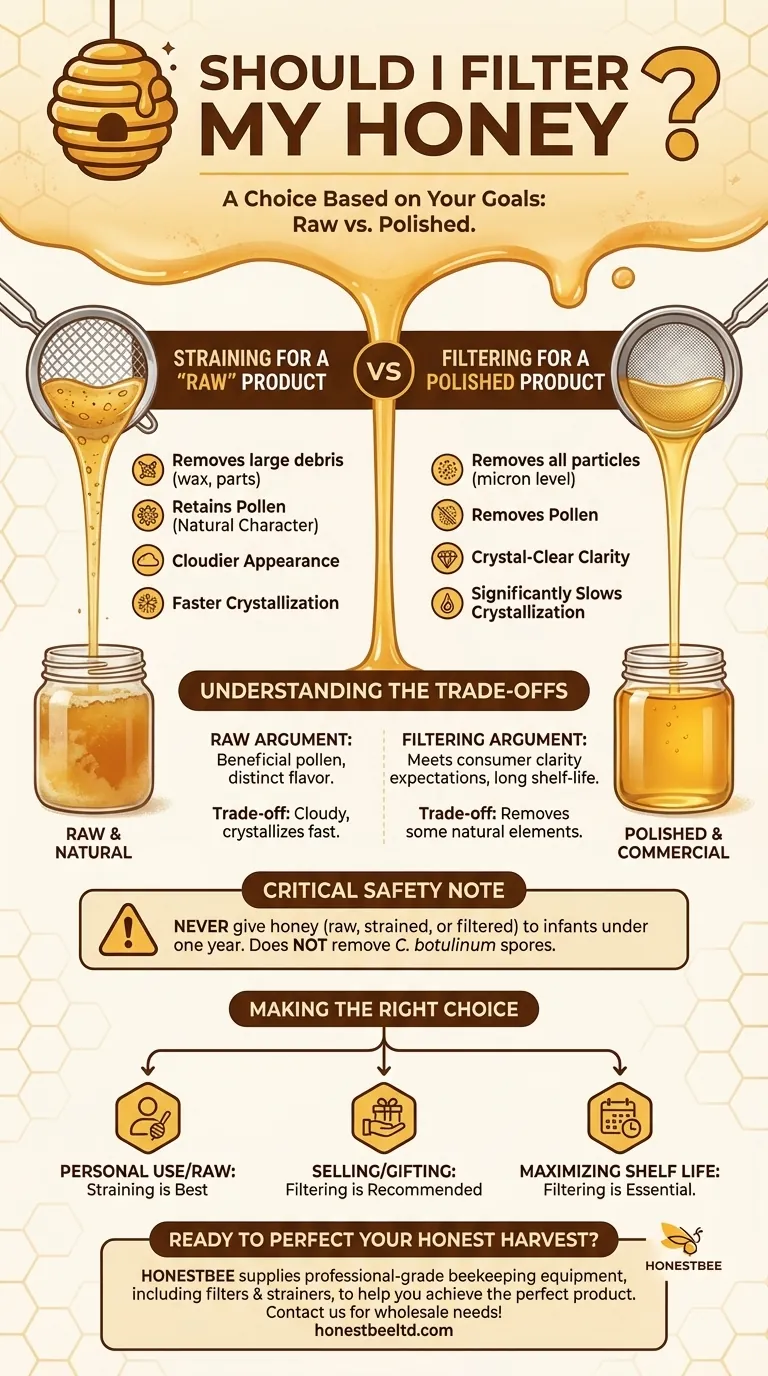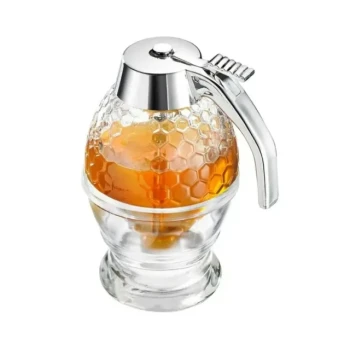Filtering your honey is a choice based on your goals, not a strict requirement for safety or quality. You should filter your honey if you want to achieve a clear, professional appearance, remove all physical debris, and significantly slow down the natural process of crystallization. If you prefer a more "raw" product and don't mind a cloudy appearance or faster crystallization, simple straining is sufficient.
The decision to filter honey is a trade-off between a "raw," natural product and a polished, commercially-appealing one. The right choice depends entirely on who will be consuming the honey and your desired final result.

What Does Filtering Actually Do?
Understanding the specific outcomes of filtering allows you to make an informed decision that aligns with your goals as a beekeeper or honey connoisseur.
Removing Physical Debris
The most immediate purpose of filtering is to remove unwanted physical matter. This includes bits of beeswax, propolis, and occasionally fragments of bee parts that fall in during the extraction process.
While harmless, most consumers are unaccustomed to finding these particles in their honey.
Improving Clarity and Appearance
Filtering creates the crystal-clear, liquid-gold appearance that most people associate with store-bought honey. It removes the tiny, suspended particles that can make honey look cloudy.
For better or worse, the public has been conditioned to see clarity as a sign of purity and quality, making this a crucial step for anyone selling their honey.
Slowing Down Crystallization
This is the key technical benefit of filtering. Honey crystallization occurs when glucose sugars form crystals, and these crystals need a starting point, or a nucleation site, to grow.
Fine particles like pollen grains and microscopic wax flecks act as perfect nucleation sites. By filtering them out, you dramatically reduce the number of starting points, which keeps the honey in a liquid state for much longer.
Straining vs. Filtering: A Critical Distinction
The terms "straining" and "filtering" are often used interchangeably, but they describe two very different processes with different outcomes.
Straining for a "Raw" Product
Straining typically involves pouring honey through a coarse material, like a standard kitchen strainer or a double-sieve designed for beekeepers.
This process only removes the large debris—bees, large chunks of wax, and wood splinters. It leaves behind the beneficial pollen and other microscopic particles that define "raw" honey.
Filtering for a Polished Product
Filtering uses a much finer mesh, often measured in microns. This process removes not only the large debris but also almost all of the suspended pollen, fine wax, and other particulates.
This is the method used for most commercial honey production to ensure maximum clarity and shelf stability against crystallization.
Understanding the Trade-offs
Choosing a method requires balancing the benefits of a "natural" product against the practical advantages of a refined one.
The Argument for Straining Only
Proponents of "raw" honey argue that leaving pollen in is beneficial, as it contains trace nutrients and allows the honey's floral source to be identified. Strained-only honey is considered a more complete, natural food.
The trade-off is appearance and texture. This honey will be cloudier and will crystallize much faster than its filtered counterpart.
The Inevitability of Crystallization
It is critical to understand that crystallization is a natural process, not a sign of spoilage. All pure honey will eventually crystallize.
Unfiltered honey simply undergoes this transformation sooner. Crystallized honey can easily be returned to a liquid state by gently warming the jar in a water bath.
A Critical Note on Safety
Neither straining nor filtering removes the microscopic C. botulinum spores that can be present in honey. For this reason, honey of any kind (raw, strained, or filtered) should never be given to infants under one year of age, as their digestive systems are not mature enough to handle these spores.
Making the Right Choice for Your Honey
Your decision should be guided by your end goal for the product.
- If your primary focus is personal use or a 'raw' product: Simple straining is likely your best choice to preserve the honey's natural character.
- If your primary focus is gifting or selling: Fine filtering is recommended to meet consumer expectations for a clean, clear product.
- If your primary focus is maximizing liquid shelf life: Filtering is essential to remove the nucleation sites that accelerate crystallization.
Ultimately, the choice reflects your philosophy as a producer and the specific experience you want to provide.
Summary Table:
| Method | Primary Goal | Key Outcome | Ideal For |
|---|---|---|---|
| Straining | "Raw" Product | Removes large debris; retains pollen & natural character. | Personal use, raw honey enthusiasts. |
| Filtering | Polished Product | Removes all particles for clarity & slower crystallization. | Selling, gifting, maximizing shelf life. |
Ready to Perfect Your Honey Harvest?
Whether you're a commercial apiary scaling up or a distributor sourcing high-quality equipment, the right tools make all the difference. HONESTBEE supplies professional-grade beekeeping supplies and equipment—including filters and strainers—to help you achieve the perfect product for your market.
Let us help you streamline your operation and meet your customers' expectations.
Contact HONESTBEE today to discuss your wholesale needs!
Visual Guide

Related Products
- Honey Concentrating Vacuum Heating Thickening Machine Dehumidifier for Honey
- Professional Thermostatic Conical Honey Melter
- 0.5T Capacity Honey Dehumidifier Dryer with Vacuum Heating and Thickening Filtering Machine
- 8-Frame Electric Self-Reversing Honey Extractor Spinner for Commercial Honey Extraction Equipment
- HONESTBEE 72 Frame Industrial Electric Honey Extractor for Beekeeping
People Also Ask
- What is the effect of excess moisture on honey's nutrients? Preserve Quality and Prevent Spoilage
- What are the main components of the honey vacuum thickener equipment? A Guide to Preserving Honey Quality
- What steps should be followed when starting and stopping the vacuum pump in the honey vacuum thickener? Protect Your Honey & Equipment
- Why is 304 stainless steel used in honey processing? Protect Your Honey's Purity & Flavor
- What are the benefits of a honey concentrator? Elevate Your Honey Quality and Market Value



















